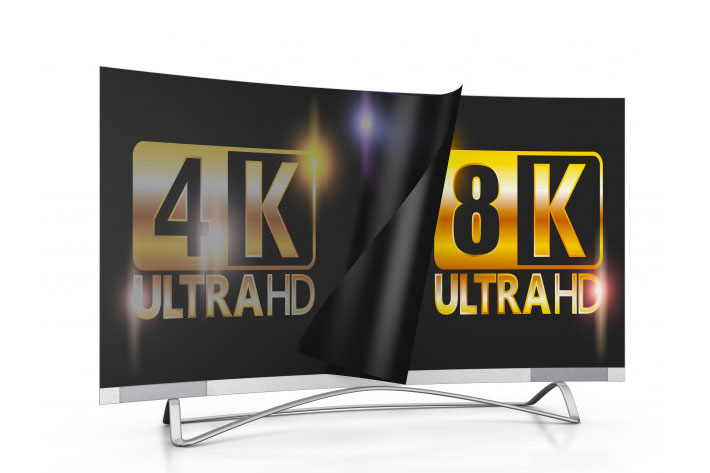
Using clips from Dunkirk to A Bug’s Life, a recent double-blind study by Warner Bros. revealed one thing: most consumers can’t see a difference between 4K and 8K. In fact, reveals the test, more prefer 4K.
Higher resolution 8K TV models made it to CES 2020, with LG, Samsung and other brands showing their new 8K models, each claiming theirs is “the real thing”. At the same time a cross-industry group, the 8K Association aims to “grow appreciation and awareness of 8K products which will provide an even higher level of entertainment which is paramount to large screen entertainment” as we mentioned in a previous article published here at PVC.
The problem with 8K is that although there are some TV experiments, there is no real consumer 8K video content and no sign that it will change soon. Furthermore, moving to 8K is not just about buying a TV, everything from cables to equipment needs to be upgraded. Also your Internet bandwidth, if you’re thinking about watching Netflix or Amazon, if they ever move to 8K. Most of the content available to watch now in 8K TVs is lower-resolution content upconverted.
Despite all this, moving to 8K makes sense for cinematographers, because of the expanded possibilities the resolution offers. Shooting 8K for the final production may be, in most cases, very distant in the future, but using the format to have more options in terms of cropping, due to the higher resolution, makes whatever is captured future-proof and a sound choice, as far as the means to shoot and edit 8K are available.
8K versus 4K: people can not see the difference
Professional test charts will also tell you that 8K is better than 4K, as it is, in fact, 4 times bigger. The problem is that most consumers can’t tell the difference, so convincing someone that they need a 8K TV is going to be more difficult that it was/is to make people move to 4K. that’s what a recent study made by Warner Bros., in collaboration with Pixar, Amazon Prime Video, LG, and the American Society of Cinematographers (ASC) reveals. The double-blind study aims was to see if people could discern a difference between 4K and 8K with a variety of content. The simple answer is: no!
According to Michael Zink, VP of Technology at Warner Bros. and one of the study’s authors, the fact that many scores rated the 4K version better than the 8K version is due to one reason: “I believe the reason you see a large number of people rating ‘4K better than 8K’ is that they really can’t see a difference and are simply guessing.
The 139 individuals who participated in the three day study all had their eyesight checked before being shown a total of seven different clips, which were all prepared for the study. Two clips from Warner Bros.’ Dunkirk (8K scans of 70mm film) included a closeup on a character and a wide shot of the beach. Animated clips from Pixar’s Brave and A Bug’s Life were rendered in 8K for this study. And two clips from the Amazon live-action series The Tick—one in a cave and the other in a spaceship—were shot in 8K on a Red digital-cinema camera, as was a clip of nature footage shot by Stacey Spears.
8K versus 4K: no significant visual improvement
The whole story, published by Scott Wilkinson in TechHive, explains how the study was conducted and refers to other several conclusions drawn from the results. As the writer notes, “increasing spatial resolution from 4K to 8K under typical viewing conditions does not result in a significant visual improvement. Also, a perceptual difference is somewhat dependent on content; in particular, ratings for the clips from Stacey Spears’ nature footage leaned a bit more toward 8K than the others, possibly because it has lots of high-frequency detail.”
While there is, as expected, a discussion online about the merits of the study and how the 8K and 4K clips were prepared, the simple truth here is, as Scott Wilkinson notes, one: This study supports the notion that 8K is only marginally better than 4K in terms of perceived detail—and only with good visual acuity at a relatively close distance from the screen. Otherwise, 4K offers as much detail as the vast majority of consumers can perceive.
